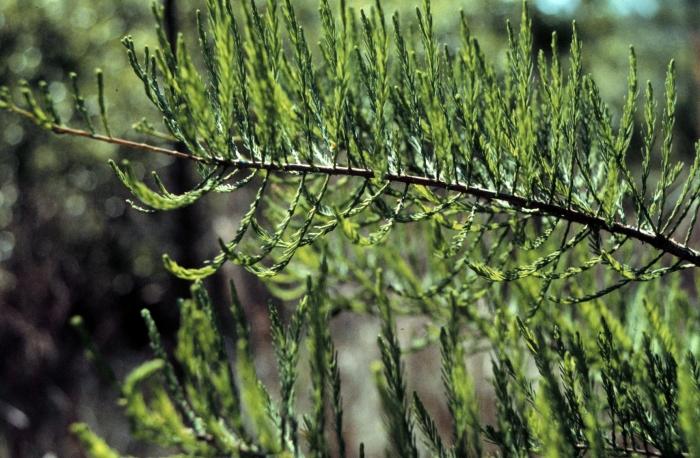Pond Cypress
(Taxodium ascendens)
Pond Cypress (Taxodium ascendens)
/
/

Public domain
Public domain
Image By:
Public domain
Recorded By:
Copyright:
Public domain
Copyright Notice:
Photo by: Public domain | License Type: Public domain | License URL: https://creativecommons.org/public-domain/ | Uploader: MPF | Publisher: Wikimedia Commons | Title: Taxodium_ascendens.jpg | Notes: {{Information |Description ={{en|1=Location taken: North Carolina Arboretum, Asheville, NC. Names: Taxodium mucronatum Ten., ahoéhuetl, Ahuehuete, Ahuehuete arbo, Ahuehuete-arbo, Ahuehuetes, ahuehuetl, Awiwiti, bochil, camphoreta, cedro bast... |








































Estimated Native Range
Summary
Taxodium ascendens, commonly known as Pond Cypress, is a deciduous conifer native to the Southeastern United States, particularly in Florida and Georgia. It is often considered a variety of bald cypress, Taxodium distichum, but is distinguished by its preference for shallow ponds, lake margins, swamps, and wetlands, often forming cypress domes. Unlike the bald cypress, which can be found in river floodplains, Pond Cypress is typically found in still or slow-moving waters without silt-rich flood deposits. It grows to an average height of 15–18 meters (49–59 ft) with a conical to columnar shape. The leaves are shorter (3–10 mm long), slender, and grow on erect shoots, while the bark is a paler gray color compared to its relative.
Pond Cypress is valued for its adaptability to wet conditions and is often used in wetland restoration, as a specimen tree in large landscapes, and for its ornamental interest due to the feathery foliage and attractive bark. It is also notable for its cypress knees, which are thought to help in oxygenating the roots and stabilizing the tree in soft soils. In cultivation, it requires full sun to part shade, consistently moist to wet soil conditions, and acidic soils. It is relatively low maintenance but should not be planted in areas where soil dryness can occur.CC BY-SA 4.0
Pond Cypress is valued for its adaptability to wet conditions and is often used in wetland restoration, as a specimen tree in large landscapes, and for its ornamental interest due to the feathery foliage and attractive bark. It is also notable for its cypress knees, which are thought to help in oxygenating the roots and stabilizing the tree in soft soils. In cultivation, it requires full sun to part shade, consistently moist to wet soil conditions, and acidic soils. It is relatively low maintenance but should not be planted in areas where soil dryness can occur.CC BY-SA 4.0
Plant Description
- Plant Type: Tree
- Height: 30-60 feet
- Width: 10-20 feet
- Growth Rate: Slow
- Flower Color: N/A
- Flowering Season: Non-Flowering
- Leaf Retention: Deciduous
Growth Requirements
- Sun: Full Sun
- Water: High
- Drainage: Medium, Slow
Common Uses
Bird Garden, Butterfly Garden, Low Maintenance, Street Planting
Natural Habitat
Shallow ponds, lake margins, swamps, and wetlands, with a note on the distinctive cypress knees
Other Names
Common Names:
Scientific Names: Taxodium ascendens , Taxodium distichum var. imbricarium , Glyptostrobus lineatus , Taxodium distichum var. ascendens , Taxodium imbricarium , Taxodium distichum var. microphyllum , Taxodium lineatum , Cupressus disticha var. imbricaria , Taxodium microphyllum , Thuja lineata
GBIF Accepted Name: Taxodium distichum var. imbricarium (Nutt.) Sarg.